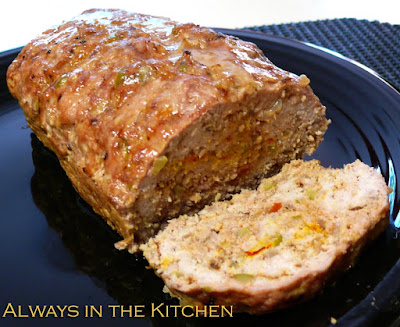 I don't have any revelations about vegetarian pizza, really. I haven't found some new, hitherto undiscovered topping that requires me to shout from the rooftops. I've just been reminded that sometimes the simple things are really, really good.
I don't have any revelations about vegetarian pizza, really. I haven't found some new, hitherto undiscovered topping that requires me to shout from the rooftops. I've just been reminded that sometimes the simple things are really, really good.The pizza above has those most classic of vegetarian pizza toppings: artichoke hearts, roasted red peppers, good black olives, and cheese (in this case, a nice Monterey Jack), and a slightly spicy, garlicky tomato sauce. I refrained from adding more and more and more toppings, which used to be my pizza downfall, and let the combined flavours hum along in harmony.
The pizza below, is a very, very simple pie based on my memories of post-nightclubbing slices devoured at a long-departed establishment that stayed open until 3:00am downtown. The deceptively simple pesto pizza. Really, all you need is a good, home-made crust (expired link removed, please see comments below for recipe), and a good, home-made pesto, and the cheese of your choice. No tomatoes. No chunky bits. Just you and the pesto and the crust. For cheese, I opted to use some of the Jack (as above), and some parmesan, which is simply a component of the pesto. You don't need a lot of cheese - and you will need to shore up the edges of your crust a little to avoid spill-age if your crusts get any oven-spring lift to them. Just smear the pesto on, sprinkle the cheese, and ignore the pang of sadness that you feel when the beautifully bright pesto turns dark, olivey green from the heat of the oven.
 I've learned a thing or three about pizza crust, in the years that I've been, ahem, studying.
I've learned a thing or three about pizza crust, in the years that I've been, ahem, studying. 1) Don't add too much flour. A looser dough has better texture
2) It doesn't matter if you forget to add salt to the crust, just sprinkle a little on the dough before you add the toppings (or use salty toppings, like feta).
3) The longer and slower the rise, the better the crust - airy, chewy, complex and delicious.
The two pizzas above were made with a batch of dough that was stirred up just before heading out to meet some friends for drinks. I only used a small amount of yeast (1 teaspoon for a double batch of dough, whereas many recipes - including my master recipe - use up to a tablespoon per pie). Three hours, on the counter, later, the dough was well-risen, soft, pliable, and ready to be stretched into shape. I can actually toss pizza crust, but generally I just pat it back and forth in my hands, like a chapatti, until it is big and round, and then flop it on a cornmeal-lined pizza pan and finish pressing it out to the edge.
I'm definitely going to try the low-yeast, slow rise thing again - it has wonderful schedule flexibility potential, and I feel the urge to experiment a little. Next time, maybe some other classics: pepperoni mushroom, perhaps (always a favourite), spinach and feta, or my personal guilty-pleasure - the cheeseburger pizza.















